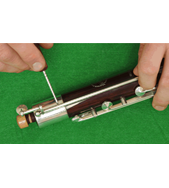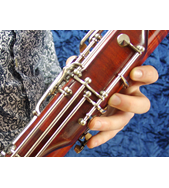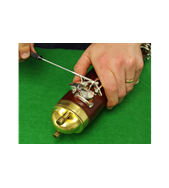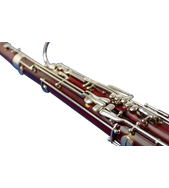10 Easy Ways to Damage your Bassoon
September 19th, 2024
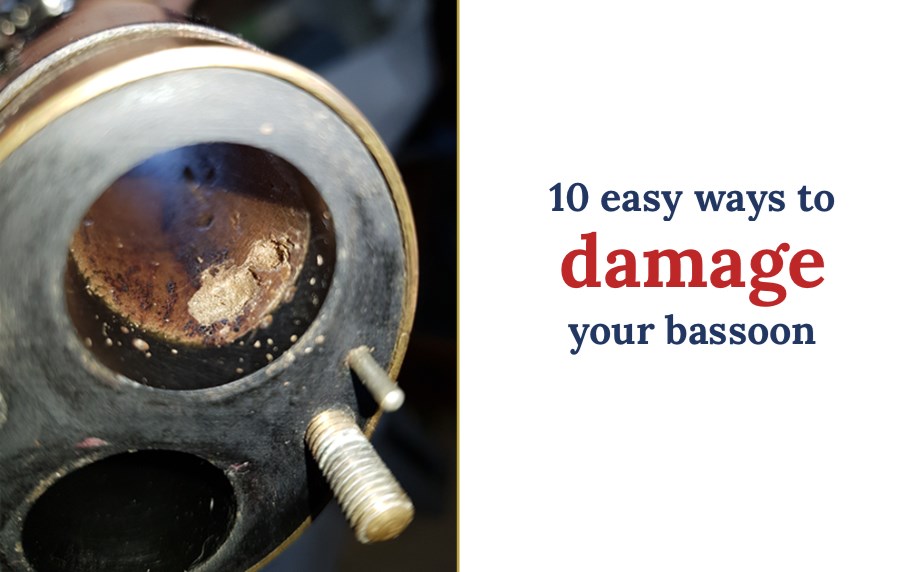
10 Easy Ways to Damage your Bassoon
First published 29/01/21, updated 19/09/24
Our specialist bassoon technicians have collated the top 10 ways bassoons can be damaged accidentally, based on years of servicing, repairing and restoring bassoons in our workshop.
Read on to find out how not to damage your bassoon!
1. Not keeping your bassoon upright after playing
Always hold your bassoon upright, and put it down on a stand after you play. If you rest it horizontally on your lap, or even tip it too far in the wrong direction, water that has collected in the U-bend can get into the unlined, wooden side of the boot joint bore. It is difficult to swab this side of the bore out properly, and over time the wood will rot.

However, while best avoided, rot in the bore or tone holes of a bassoon is not an insurmountable problem. At Double Reed Ltd. we always check for signs of moisture damage when servicing bassoons because, if caught early, the damage can be fairly easily fixed. The longer the problem is left the more likely major work will be necessary to repair the damage.
The rot in this customer’s bassoon is so extensive we are having to replace this portion of the bore entirely:
2. Not pouring out water correctly
Tipping the water out of the boot joint incorrectly – you must pour it so the water does not enter any of the toneholes, as regular contact with moisture can cause them to rot.
Pouring and twisting to direct the water away from the toneholes is a technique which is simple, but important to master. Pay particular attention to the C# trill tonehole, as this is one we commonly see with water damage.
Here is the technique you need to use:
If you don't use this technique, here's the repair we may need to do on your bassoon:
3. Not swabbing out the bore correctly
Always swab the boot joint from the large, unlined side of the bore to the small, lined side – this prevents pulling water from the lined side through the wooden side.
4. Not putting the bassoon together in the right way
Assembling a bassoon incorrectly can easily lead to damage to both the keys and the finish – here is what to watch out for when putting one together:
- Place your hands where the keys naturally lie flat against the body of the bassoon, and where you see the most key guards – this will help prevent raised keys getting bent as you apply pressure to the joints.
- As you insert the wing joint into the boot, make sure you do not twist it too far in either direction – the whisper key bridge can easily get bent, and can also damage the low E key if too much force is applied.
- Likewise, be careful not to twist the long joint too much – the low E flat and low C# keys can get bent, and are a very common cause of damage to the finish around the D vent on the wing joint. The post for the low D pad cup is another area which commonly causes finish damage to the wing joint.
- When putting on the bell joint, make sure you hold down the low Bb pad cup - this raises the key mechanism so it can’t impact on the key it connects to below.
- Make sure the crook lock is off when inserting your crook – if it is accidentally left on you can damage the crook pad.
5. Using an ill-fitting case
If your bassoon does not fit in your case well, then it may be time to look for a new case. The joints should all fit snugly, with no room for them to slide or rattle around. An ill-fitting case can cause keys to get bent, and the finish to get damaged. One common reason for damage is the keywork of one joint being too close to, or in contact with, the wood of another joint in the case so that it damages the finish.
Many bassoonists wrap their bassoon joints in thin cloth before putting them in the case, which is a good way of protecting them. This also protects the joints from the crooks if they are stored in the bottom of the case, where they can come into contact with the joints.
Likewise, it is not advisable to put sheet music on top of your bassoon inside the case – paper is a lot less malleable than thin cloth, and the pressure when the lid is closed can bend keys.
Tip: Don’t put the body lock on whilst the bassoon is in its case – it is easy to forget the lock is on, and accidents can occur when trying to remove either one of the joints when they are attached together.
6. Putting cork grease on tenon threads
Cork grease is ideal for corked tenons, but lubricating cotton-threaded tenons with cork grease will make it harder to assemble the joints, not easier.
Cotton absorbs cork grease, causing the thread to expand and making the tenons tighter. This can damage the tenons, but can also lead to keys being bent owing to the extra pressure needed during assembly and disassembly of the instrument.
Paraffin wax is ideal for lubricating cotton-threaded-tenons, as the cotton does not absorb it.
7. Using long-handled fluffy mops to swab out the bore
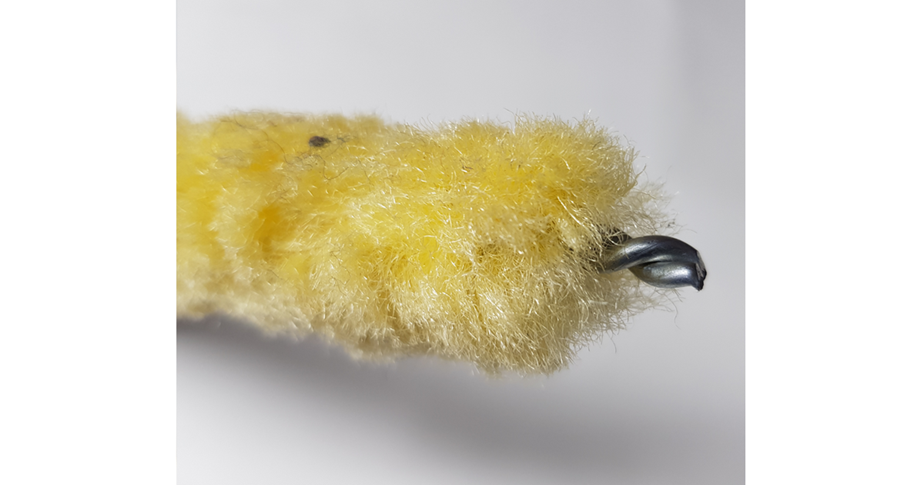
Don’t use long-handled fluffy mops to swab out your bassoon - the mop is usually held onto the handle with wire, the sharp ends of which are covered by a plastic cap. Over time this cap tends to fall off, leaving the sharp ends of the wire exposed, which can scratch the bore and damage the U-bend.
The fibres from the mop can also get under your pads and cause leaks.
Silk pull-through swabs are ideal for swabbing out your bassoon.
Tip: Likewise, don’t let your cat sleep in your bassoon case – hairs can get under your pads and cause leaks!

8. Trying to remove a swab that is stuck in the bore
Don’t try and remove a swab stuck in the bore of your wing or boot joint yourself – it may seem easy to get it out, but the risk of scratching the inside of the bore with any implement you insert is high.
Take it to a local bassoon repairer – we have special tools for removing swabs.
9. Closing your bassoon case too soon
It is important to keep your bassoon in a case to keep it out of harm’s way, but closing the lid on a bassoon with a damp bore will allow bacteria and mould to grow.
After swabbing out your bassoon (thoroughly!), put it in your case, but keep the lid open for a few hours to let any left-over moisture dry out.
Do not keep used swabs inside your case with your bassoon, as the moisture will cause damp and mould. Hang them up to dry at first opportunity, and make sure to wash them regularly.
10. Not having your bassoon serviced regularly
When it comes to servicing, little and often is the best advice to follow. Most problems that occur with a bassoon are fairly easy to repair if caught early. Problems that are not caught early tend to get worse over time, and need more invasive solutions to fix them.
It is more cost-effective to get your bassoon serviced once a year than to leave it and deal with major issues less frequently.
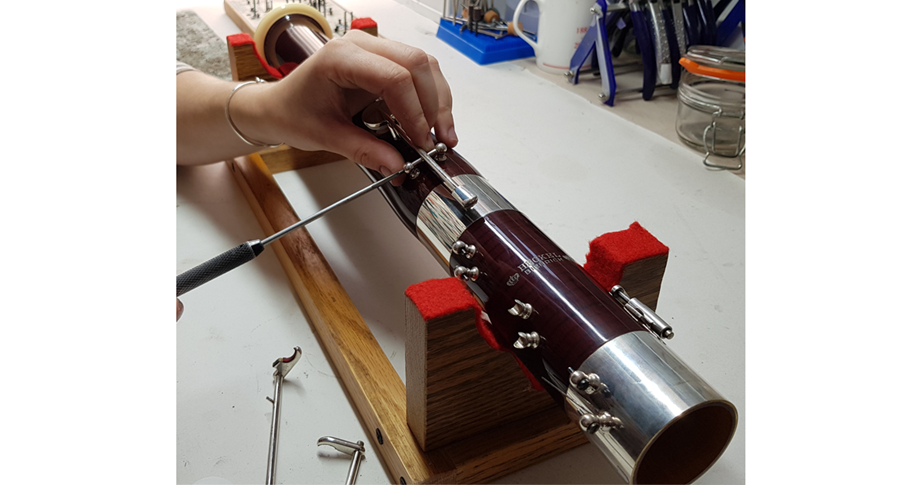
There are few instruments that are as long lived as the bassoon. Care for your bassoon using the above steps and it will last for a lifetime of happy bassoon playing.
If your bassoon needs a service or repair, please get in touch and we will be happy to help.
Article Author: Oliver Ludlow, Director and In-House-Bassoon Specialist at Double Reed Ltd.
